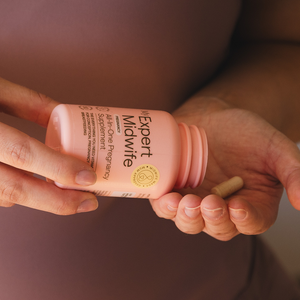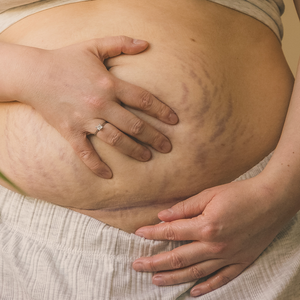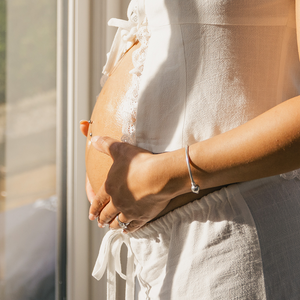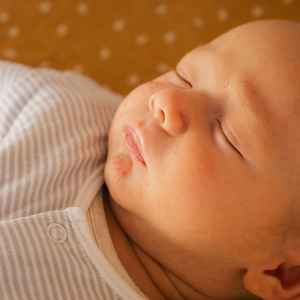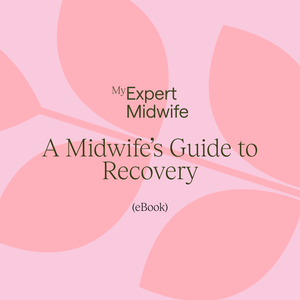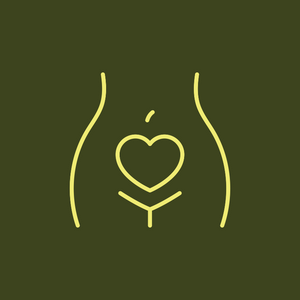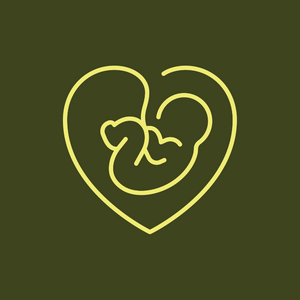Introduction
A Caesarean section, also known as a C-section, is an operation performed to deliver a woman’s baby or babies via an incision (surgical cut) to her lower abdomen (where the bikini line is). You may have C-sections for medical, personal or psychological reasons, and it is estimated that around 25% of babies in the UK are born via C-section.
A C-section is major abdominal surgery, and recovery time can vary from one woman to another. After your operation, the large abdominal muscles that have supported your growing womb - which your pregnancy may have already weakened - can feel quite sore. Also, tissues cut during the surgery and stitched back together need time to recover and heal. It means that you will need to take things slowly, rest plenty and take extra care when moving about and lifting things.
C-section Recovery Time
Every woman is individual; therefore, every recovery journey will be unique. It is essential to be aware of this and avoid comparisons with other women’s healing experiences or even your recovery from a previous C-section.
Your wound and major internal structures will be healed in 6 weeks, but there are things you can expect from the first few days to C-section recovery week by week.
The first few days
The first few days following your Caesarean birth are the most uncomfortable.
You’ll be dealing with
- Tiredness, as your body begins to recover from the operation and your stay in the hospital.
- Soreness at the wound site and internally.
- The limitations of being unable to do things and move about as usual.
- Difficulty sleeping - sleeping on your back is recommended for surgery recovery as it puts the least amount of pressure on your incision site and is a neutral position.
- Looking after your baby, bonding with them and feeding them.
- Unexpected discomforts include shoulder/neck pain caused by trapped wind, vaginal bleeding, possibly constipation, healing from the site where you had a cannula inserted, etc.
These are days for almost absolute rest, regular pain medication and good, nutritious meals.
After your dressing comes off
In most cases, your dressing can be removed (by your midwife or yourself) at around 5-7 days post-op. This will allow you to see your wound for the first time, and you may find that the area around your wound looks somewhat bruised and the line of your wound appears raised.
Depending on the material and technique used by the obstetrician to close your skin, you may be able to see some sutures and/or ‘knots’ – where the doctor has cut off the thread and made a small knot. These are not externally visible in many wounds or may only be seen at one or both ends of the incision line.
The suture material used for C-section is dissolvable and will typically completely disappear within 90 days of your operation.
By two weeks
As your wound heals, the C-section incision line may become dark pink, red or, on darker skins, a darker shade of brown. It will possibly look and feel raised and will still be sore.
Once your skin has healed and there is no gaping or oozing, you may choose to lie on the bed, have a look and run your fingers through it. This is an essential aspect of reconnecting with your body and thanking it.
Most women find that they are much more comfortable and able to move about with ease at 10-14 days post-birth, although this can vary significantly from woman to woman.
By 6 weeks
In most cases, the wound and internal structures that have been cut and stitched back up during your C-section will have healed by 6 weeks.
This is usually when you’ll have a postnatal check-up with your doctor.
You should avoid driving for at least six weeks after the procedure, but you will need to contact your car insurance company for more information about when you can get back on the road again.
Fully healed
For your body to heal completely, at what we call a cellular level, it can take up to 2 years.
How painful is C-section recovery?
The area around your wound, both internally and externally, will feel bruised and tender, particularly during the first few days. Most women report feeling uncomfortable when they return home after their operation.
This is partly because the effects of the anti-inflammatory suppository provided to you at the end of your operation have worn off after 24 hours and also, somewhat, because you are moving very little in the hospital and have an electric bed that allows you to sit up and get on/off the bed more easily.
Many women would describe the pain as similar to having been to the gym a couple of days before and done 100 sit-ups! The discomfort will not always be there (or you may be aware of mild discomfort), but you will feel it when you bend, stretch, lift weights, stand or sneeze.
For this reason, you’ll want to avoid these movements and walk or move slowly. If and when you need to move in such ways, do so gently and breathe deeply.

Do’s and Don’ts of Caesarean Section Recovery
Do
- Get plenty of rest – this is essential for your physical and emotional recovery. For the first week and a half, only move to go to the bathroom.
- Take your pain medication regularly – this will keep you ‘topped up’ and relatively comfortable.
- Wear loose clothing - including knickers and bottoms that sit comfortably over your wound and do not rub the area around it.
- Experiment with different breastfeeding positions – side-lying and the ‘football hold’ are good after a C-section. Learn more about breastfeeding positions here.
- Set an alarm for your anticoagulation (blood-clotting) injections – Between moving slowly and your blood thickening after your baby is born, your risk of having blood clots is significantly increased after a C-section, so make sure you don’t miss a dose!
- Roll on your side and push yourself up with your arms when getting out of bed – Using your arm strength wherever possible will minimise the effort your tummy muscles need and, therefore, the pain.
- Prepare your layout at home – to avoid going up and down the stairs, you’ll want to settle on a floor where there is a toilet. To be as comfortable as possible, place plenty of cushions and a footstool, be near sockets, and have a safe surface at arm's reach for drinks and food.
- Discourage people from sending flowers – not only is all that pollen potentially symptom-inducing for you and your baby, but there are much more practical gifts people could be getting you: from hired help (cleaner, baby-sitter for older children, pet-walker) to arranging a ‘meal train’ – where your family and friends agree on a rota and bring you a different, nutritious cooked meal every day.
- Get a ‘wound station’ together – Put everything you need - e.g. cotton wool, a mirror, a clean bowl, nappy bags, a small towel, spare sanitary pads and Spritz for Bits – into a box or tub to help you clean & ‘air’ your wound at least daily.
- Be kind to yourself – Any post-operative recovery is hard – but having abdominal surgery after 9 months of pregnancy and healing and recovering whilst you care for and feed a newborn baby is not easy! Be gentle, patient and kind with yourself. And make sure to prioritise your recovery.
- Hog the armchair! - If you’ve got one at home, put your name on it. Life will be much easier if you have arms at either side to help you up and secure pillows that’ll help support your arm when holding the baby.
Don’t
- Lift anything heavier than your baby – and, even then, try to have your baby passed on to you for the first 1-2 weeks until you feel a little stronger and less uncomfortable. Lifting anything heavier than your baby can put pressure on your body.
- Compare your recovery to anybody else’s – There is no merit in “bouncing back”. Every woman’s recovery and healing experience will be different, not ‘better’ or ‘worse’. Focus on yourself and your family.
- Ignore possible signs of infection – Although a certain amount of pain is expected, speak to your midwife, doctor or maternity unit (obstetricians and gynaecologists) if you have increasing pain, discharge from your wound, an offensive smell coming from your wound or your vagina, redness or swelling around your wound, or you feel unwell.
- Go thirsty! – Good hydration is critical for optimal body functioning, including healing. Always have a big drink by your side and aim to take regular sips throughout the day.
- Survive on snacks – Nutrition is essential for healing and recovery, so make sure you eat healthy and nutrient-dense meals and opt for nutritious snacks (e.g. nuts, seeds, dried fruit, fresh fruit, veggie sticks with hummus, hard-boiled eggs, etc.)
- Put off that first poo – The thought of your first postnatal poo may be scary, but nothing will come undone whilst you’re on the loo, don’t worry. Raise your feet a la ‘squatty potty’ style, get plenty of fibre in your diet, remain well hydrated and ask to have laxatives prescribed for the first couple of weeks
- Give in to the pressure of having visitors – If possible, inform your family and friends before your C-section that you’ll be having no visitors for the first couple of weeks. You need rest and as much help as possible, not to entertain and be exhausted by conversation. Plus, the presence of visitors can disrupt your baby’s sleep and lead to you missing feeding cues – all of which can result in a fractious baby that is difficult to soothe and feed later on.
What problems can I expect?
Wound Pain
Following your C-section, a certain amount of wound pain is expected. Yet most of the pain you’ll experience will happen when you are:
- Getting up from sitting
- Getting in or out of the car, bath, bed, etc
- Lifting things – so try to get your baby and heavy items passed on to you
- Bending
- Walking, especially up/down the stairs
- Sneezing/coughing
When you are still, you’ll probably feel relatively comfortable.
Many women experience nerve bundle pain, which occurs in one spot, often where the doctor has tied a knot at the end of a cut that presses on a bundle of nerves. Nerve bundle pain can be very sore, making you stop short, but it quickly disappears.
Tips for managing pain:
- Take regular pain relief, even if you feel relatively comfortable, as this will keep you topped up and help you avoid more acute pain, which can be challenging to control.
- Rest, rest, rest! Your body needs time to heal, and it does this best whilst you are at rest. Move little and gently during your first-week post-op and slowly increase your activity as you recover.
- Hold a pillow or cushion against your lower tummy when getting up from the sofa/bed, when coughing, or, in the early days, also when walking.
- Use Spritz for Bits to help soothe the area once your dressing is off and your wound is healing normally.
Speak to your midwife, GP or maternity unit immediately if you feel the pain increase, painkillers have little or no effect, or you are in constant pain, even when resting. These symptoms could indicate an infection, for which you may need a course of antibiotics.
Poor abdominal strength
Poor abdominal strength after your C-section is caused by the weakened abdominal muscles severed and moved during your C-section.
Tips for managing:
- Avoid using your abdominal muscles to sit up - instead, roll onto your side and either walk your hands to sit up or use your arms to push yourself up.
- Consult with your midwife/doctor about appropriate strengthening exercises and when to start them, based on your circumstances.
- If you can see a physiotherapist – they’ll be able to guide you through the most appropriate exercises to help heal and strengthen this area.
Afterpains
Following any type of birth, including vaginal birth, your uterus (womb) contracts back to its pre-pregnancy size. These contractions – often like menstrual cramps – are known as afterpains and help prevent too much bleeding by compressing the blood vessels in the uterus.
Afterpains are usually more noticeable during breastfeeding due to the release of oxytocin following the birth of your second, third or subsequent babies, as your womb needs to work harder to contract back to its original size.
Tips for managing afterpains:
- Take regular pain medication.
- Use a warm hot-water bottle on your lower back rather than your tummy to avoid pressure and heat over your C-section wound.
- Enjoy a warm bath with Soak for Bits to help ease aches and induce relaxation.
Shoulder/neck pain
Despite being rarely mentioned, shoulder pain following a C-section is a common complaint (which has little to do with bad posture).
Most women feel it in the tip of their right shoulder (it is commonly known as shoulder tip pain, or STP), with some women also experiencing pain in their neck and arm.
Although the precise mechanism that causes shoulder pain after a C-section is unclear, thoughts revolve around it being caused by:
- blood, amniotic fluid or air irritating the diaphragm (the sheet of muscle that sits under your lungs).
- Stretching of the peritoneum (the membrane that lines the abdominal cavity).
- The presence of CO2 gas in the abdominal cavity.
Gas build-up leading to ‘trapped air’ after a C-section can be very uncomfortable and limiting.
You can help manage shoulder and neck pain post-C-section by:
- Mobilising gently and regularly - to disperse and move gas along
- Drinking peppermint tea/water - You’ll need to keep drinking it throughout the day, so pack a box full of teabags!
- Putting a heat pack or hot compress on your shoulder and neck can provide rapid relief and help relax the area.
- Taking pain relief - You will likely be taking pain relievers regularly anyway, so make sure you stay on top.
- Asking for a massage - Postnatal massage is an excellent way for a partner or loved one to nurture you while you recover. Feeling relaxed helps promote healing.
Itching and Numbness
It is common to experience itchiness and numbness around your C-section scar, usually caused by damage to the nerves during your operation. In some women, numbness begins to improve after 4-8 weeks, whilst for other women, their scar remains numb for life. It is common to have cool ‘patches’ yet regain sensation on parts or most of your scar.
Itching can also be caused by the re-growing of pubic hair, the wound dressing (whilst it is on or soon after its removal), and the healing process itself.
Managing itching and numbness:
- Clean and air your wound daily.
- Avoid tight clothing and manufactured fibres, such as polyester, over the scar.
- Use cold packs briefly over the scar if it becomes very itchy – ideally, for no longer than 5-10 minutes.
- Avoid scratching! This can increase the risk of infection, but if the area is numb, you may irritate too hard and cause damage.
- Massage your scar once your skin has fully healed (at approx. 6 weeks).
Wound infection
C-section wound infections are surprisingly common and can happen for various reasons.
Recognising the start of infection can be invaluable to your recovery, as the earlier it is caught, the easier it is to treat, preventing potentially serious consequences.
Signs & symptoms of a wound infection include:
An increase in pain – Although pain is expected after surgery, the pain you experience should decrease as the days pass, only increase briefly with movement/effort, and respond to pain relief.
Pain that is increasing and/or does not improve with analgesia is your body’s way of alerting you to a problem and needs prompt assessment by a healthcare professional.
- Increased bleeding from your vagina may be expected, especially during breastfeeding (as this causes your womb to contract) or if you’ve been too active. However, if you experience vaginal blood loss that soaks through pads and/or passes large clots, this isn’t normal and needs immediate medical attention.
- Offensive smell – This may come from your wound or vagina (denoting an infection in the womb, rather than your C-section wound). Some women may struggle to identify what a ‘normal’ smell is, as there’ll be a mix of new smells from you and your baby (breastmilk, baby’s nappies, vaginal blood loss, etc.) in those first couple of weeks. However, an offensive smell is very distinct and unpleasant, making you pull away from it. If you or your loved ones notice such a smell, contact your midwife/doctor/hospital as soon as possible.
- Redness, inflammation & oozing – If the skin around your wound is becoming increasingly red, inflamed (swollen), tender or hard to the touch, and/or there is oozing of blood or yellow fluid from the wound; you will need to be assessed by your maternity health care provider promptly.
- High temperature &/or feeling unwell is your body’s natural response to most infections, so even if you do not think your wound is infected, always seek medical advice if you have a temperature or have ‘flu-type symptoms following your C-section.
Preventing wound infections
Many C-section wound infections will be caused by bacteria that enter the wound site during or shortly after your operation. Yet, you can take measures before and after your operation to help reduce the risk of infection.
You can help prevent infection on your C-section wound by:
- Removing your pubic hair with clippers - rather than a razor, at least 2-3 days before your surgery. Shaving can cause microscopic skin abrasions where bacteria can enter and grow.
- Requesting subcuticular sutures rather than staples – staples are rarely used to close C-section wounds in the UK now, but as they are known to increase the risk of wound infections, you could request that your wound is closed using under-the-skin stitches.
- Airing your wound site daily – If your stomach hangs over your C-section wound, it may reduce airflow, increasing your risk of infection. Make sure your wound is aired for 10 minutes twice a day. To help the wound remain dry and clean throughout the day, place a piece of cloth (made from natural fibres) between your skin and the wound.
- Cleaning your wound daily is essential for post-op care. Clean your wound, gently pat it dry and leave it to air.
- Managing diabetes - for those with diabetes, the risk of infection increases if blood sugar is not controlled correctly.
Managing a wound infection:
If you think you have or have been told you have a wound infection:
- Seek medical assessment as soon as possible – early antibiotic treatment is critical and can significantly reduce the risk of complications.
- Clean and ‘air’ the wound site at least once a day.
- Eat good, nutritious food and plenty of fresh fruit and vegetables, and keep well hydrated.
- Take your antibiotics as punctually as possible to give them and your body the best fighting chance against the infection.
C-section Scar Recovery
During the first few weeks after caesarean delivery, once the dressing has been removed and regular wound healing occurs, use Spritz for Bits Spray to help relieve soreness and itchiness.
A regular self-care routine, including a soothing bath, can contribute to your physical and emotional recovery after childbirth. Add in some Soak for Bits Bath Salts to help with relaxation. Both products are packed with essential oils with anti-inflammatory and anti-bacterial properties to help soothe swelling and bruising and clean and protect.
Once your wound is considered well healed, usually around six weeks post-birth, start using Super Scar Recovery Oil on your scar. This has been specially developed to help improve the appearance and condition of scar tissue through regular C-section scar massage.
C-section Aftercare
After your C-section, you will need to:
- Prioritise rest, as this is key to recovery and healing.
- Take care when moving about and lifting things.
- Ensure you are eating healthy, nutrient-dense foods – good nourishment is essential for your body to heal and recover optimally.
- Be supported by your loved ones, so you can focus on resting, recovering and bonding with your baby – try to have support before your C-section so you don’t have the mental load of organising help/delegating jobs after the birth.
- Attend your 6-week postnatal check-up with your GP.
Seek medical advice if you suspect a wound infection, you don’t think your wound is healing as expected, or if you feel unwell or concerned.
